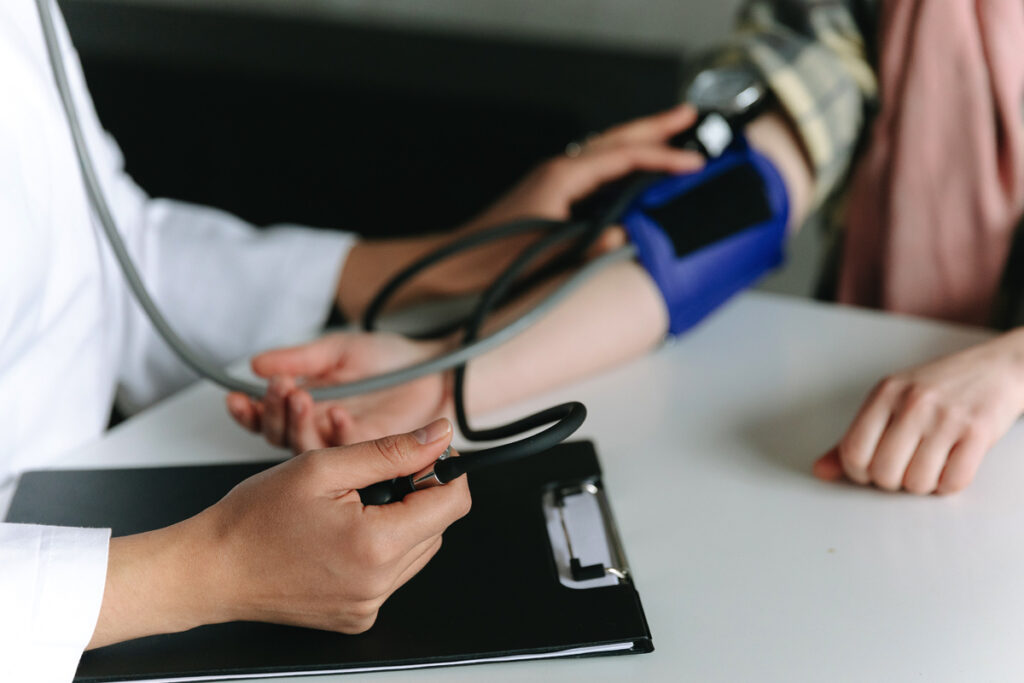Prevention is Key
Tara Gidus Collingwood, MS, RDN, CSSD, ACSM-CPT

We have all experienced the loss of our beloved spouses. Some losses came from a short or long illness, and some from a tragic accident, so we all know too well that good health and keeping ourselves safe is critical. As a health practitioner, I join the chorus of others who preach the word of prevention. I lost my husband to Stage 4 stomach cancer. While we do know some things that help reduce the risk of cancer, everyday people who are seemingly the picture of health can succumb to the horrible disease.
While Stephen was in his 11-month battle for survival, I was reading statistics on how caregivers are at higher risk of illness while they are in the caregiving role, and even afterwards, because we don’t take care of ourselves during that time of caregiving. I will say that I was guilty of not doing the self-care that was needed to be the best and healthiest version of myself.
I am a firm believer in having an annual physical exam, depending on your age and health risk. Healthy people in their 20s can have one every 2-3 years; in your 30s and 40s, every 1-2 years; and in your 50s and beyond, you should see your physician annually.
Here are some of the benefits of having a physical exam:
- Establishing a relationship with a physician. Having an established relationship is key for times when you need them, such as when you require a prescription for an ear infection. If they already know who you are and you are established in their practice, it is easier for you to get in for an appointment, especially at the last minute.
- Keeping track of health markers. An annual physical usually includes things such as blood pressure reading, weight, and bloodwork. Start a spreadsheet and keep track of your numbers so you can see how much your HDL (good) and LDL (bad) cholesterol change year-to-year. This also allows your doctor to see if there is anything abnormal that may be asymptomatic but could become a bigger problem. The earlier problems are found, in general the easier they are to treat.
- Managing medications. Discuss any side effects you may be experiencing with your current medications. You may need a dosage adjustment. You can also discuss over-the-counter medications and supplements.
- Assessing risk. Your doctor can begin to assess your risk for certain diseases and order follow-up testing such as a bone scan, glucose tolerance test, or a referral to specialists such as dermatology or cardiology. They can also counsel on risk-reducing behaviors such as losing weight, quitting smoking, and more.
Here are some common tests women should consider having, and how often you typically should do them:
- Blood pressure: Monitor regularly at blood pressure stations in stores, but get checked annually with physician.
- Cholesterol: Get a breakdown of the total, HDL (good), LDL (bad), and triglycerides annually.
- Other bloodwork: Your doctor can also test for things such as liver function, kidney function, white and red blood cell count, thyroid, iron status, and more. Standard panels should be ordered annually.
- Pap and HPV: Your gynecologist will recommend how often you should schedule an appointment depending on age and risk factors.
- STD testing: Many STDs do not have symptoms, so if you are sexually active, you should get tested regularly.
- Skin check: Ideally this will be done by a dermatologist. Bring attention to any new spots you have noticed in the previous year.
- Mammogram: Yearly starting at age 40. Begin earlier with a family history of breast health issues.
- Colonoscopy: First one at age 50, or earlier with history of GI problems or family history. Every 5 years thereafter unless your doctor recommends more or less frequently.
- Bone density: Initial testing at age 50 if thin, but otherwise beginning at age 65.
- Eye exam: Start at age 18, then every 2 years afterwards. After age 60, have an annual exam.
- Hearing: Have your hearing tested every 10 years, and annually after age 60.
- Baseline ECG (electrocardiogram): Have a baseline ECG by the age of 35 to establish what a normal rhythm looks like for you, then afterwards as recommended by your physician.
- Vaccinations: Your doctor can recommend if you need updated boosters or new vaccinations based on your age and risk factors.
The earlier a medical problem can be identified, the sooner you can get treatment for it. Almost half (46%) of cancers are detected once they have advanced past Stage 1. Outcomes are so much better when treatment can begin as soon as a cancer is detected.
Visiting the doctor is not something that anyone really looks forward to, and taking medications can cause side effects. But one of the side effects to both going to the doctor and taking medications as prescribed could be saving your life!
Tara Gidus Collingwood, MS, RDN is a Registered Dietitian Nutritionist, Certified Personal Trainer, and fellow Wister. You can find her at dietdiva.net.

